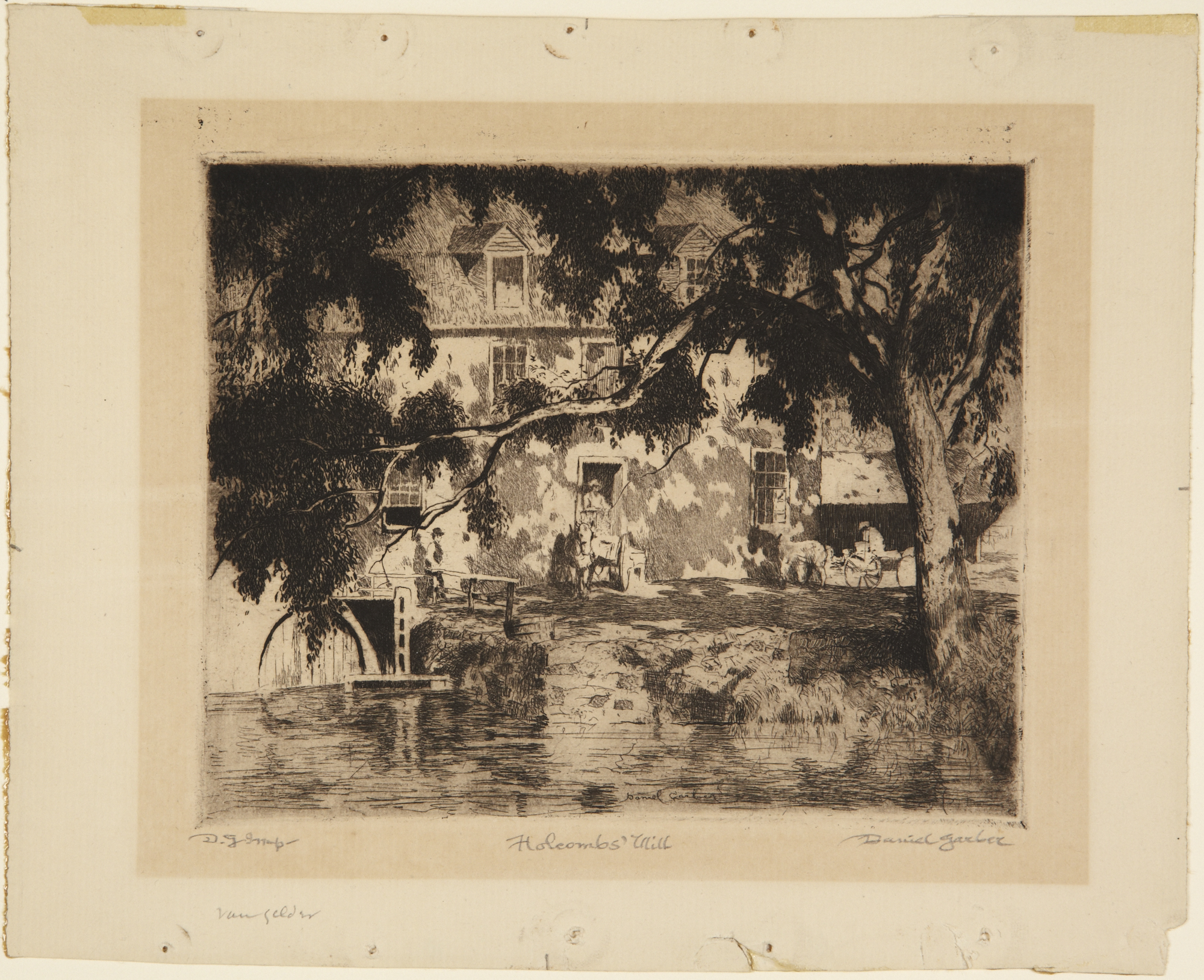Daniel Garber
Daniel Garber, one of the most interesting and original of the late American impressionists, was born in North Manchester, Indiana, the youngest son of a Mennonite family. As a youth he studied with Frank Duveneck at the Art Academy of Cincinnati, and later at the Pennsylvania Academy with Thomas Anschutz and J. Alden Weir. In 1905 he received a fellowship to study abroad from the Pennsylvania Academy, and while in England he painted works that are the most strictly impressionist of his career.
On his return to America in 1907 he established a studio in Lumbersville in Bucks County, just north of New Hope, Pennsylvania, and in the ensuing years became a central figure in the New Hope art community.
During these years he developed two different modes of painting. His more conventionally impressionistic works were lightly painted with attention to the shape and detail of the subject matter. His other, more popular style was more decorative and poetic, as exemplified in Tohickon [SAAM, 1922.6.3]. Framed by sinuous tree trunks silhouetted in the foreground, a planar regression into the distance is bathed in a soft luminous light. It was a quietly lyrical style distinctly opposed to the bravura technique adopted by his colleagues in the New Hope colony.
In 1919 he began teaching at the Pennsylvania Academy and at his retirement thirty years later was one of its most loved and respected instructors.
Emery Battis Artist Biographies for the exhibition American Impressionism: Treasures from the Smithsonian American Art Museum (Washington, D.C.: Smithsonian American Art Museum, 2000)




